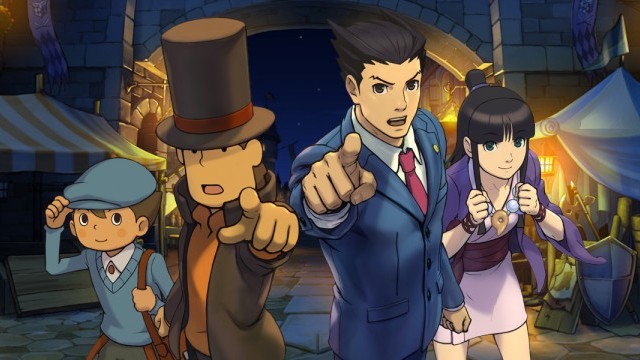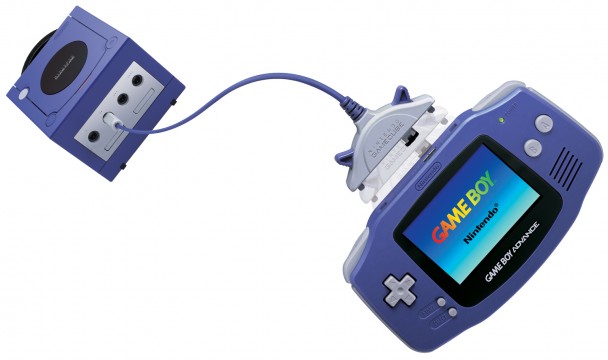
This week, rumors once again began to swirl regarding the next Nintendo system, the NX. At this point, it seems all but guaranteed that the system will be Nintendo’s next console and handheld, marrying the concept of the Wii U GamePad with a legitimate handheld that can be played outside the house. It’s a bold move, but not an unsurprising one, all things considered.
Since the debut of the Game Boy, Nintendo has dominated the handheld market. Despite competition from handhelds with superior graphics, features, and processing power, Nintendo’s Game Boy and DS lines have trounced all would-be competitors. Systems like the Game Gear and PSP simply never offered the kind of AAA, first-party software that Nintendo’s handhelds could boast. As a result, Nintendo handhelds have also attracted third party publishers and developers in ways that the company’s consoles haven’t since the days of the Super Nintendo. Franchises such as Monster Hunter, Yo-Kai Watch, Professor Layton, and Phoenix Wright have made their homes almost exclusively on Nintendo handhelds, building devout fanbases.

Unfortunately, developing for both handhelds and consoles has often split Nintendo’s resources. Franchises like Pokémon were kept on handhelds when they could have been potential console sellers. Instead, Nintendo consoles would end up with franchise spin-offs, when stronger console technology could have been a boon for the franchise. In the case of the most recent Super Smash Bros. title, Nintendo devoted quite a bit of effort into releasing that particular title on two systems, rather than one. With just one system to develop games for, Nintendo could better allocate those resources.
Having two systems has also split Nintendo’s fanbase. The Wii U userbase has languished around the ten million mark, while the Nintendo 3DS family has moved nearly six times that amount. A large reason is likely because Nintendo fans have been able to buy a handheld for a reasonable amount of money that allowed them to keep up with the company’s icons without buying a Nintendo console. As technology has evolved, players have also been able to get experiences on handhelds that are closer to the console experience. Game Boy offered strong titles in the Mario and Zelda franchises, but The Legend of Zelda: Link’s Awakening and Super Mario Land 2 weren’t nearly as impressive as A Link to the Past or Super Mario World. As technology has improved, however, the differences between console and handheld experiences are shrinking. 3DS offerings such as Super Mario 3D Land and A Link Between Worlds are leagues ahead of what handhelds once had to offer. In a way, this has made Nintendo one of their own greatest competitors.
Given all of this, it’s unsurprising that Nintendo would consider one system, moving forward. In retrospect, the company has been attempting to combine its handhelds and consoles in some form or another since the very beginning. The Super Game Boy, Pokémon Stadium, Game Boy Advance Connectivity: these all represent ways in which Nintendo has attempted to merge its two products. The Wii U GamePad, especially, now seems like Nintendo’s final attempt to test the waters before making a system like the NX.

The move is not without risk. 3DS is an undeniable success, but the rise of the mobile gaming market resulted in fewer systems sold than its predecessor, the original DS. The DS was able to appeal to casual gamers with titles like Brain Age, but the explosion of smart phones and tablets took away a significant portion of that market. Even at a reasonable price, handheld systems became a tougher sell to casual gamers once titles like Candy Crush and Words With Friends started to release on a platform most people already travel with. Still, there will always be a demand for handheld systems, as they can offer more robust gameplay experiences than cell phones, and parents are more inclined to give one to children. In markets like Japan, handhelds are still so popular that even Sony’s Vita (a dead system in nearly every other territory) still sees a steady influx of software.
For the NX to be a success, Nintendo will need the combined weight of its development teams working to make the system sell. The company will also need 3DS’s strong third party support to stick around. With 3DS a very strong seller in Japan, the system has found a lot of appeal with Japanese developers and publishers. Should they jump over to the NX, it could see the strongest third party support on a Nintendo console since the days of SNES.
Time will tell exactly how successful the Nintendo NX will be. On paper, it seems like a brilliant idea. Merging Nintendo’s two devices can lead to a single strong system, with a reason for existing in a world where cell phone gaming has become both practical and lucrative. That said, Nintendo will still have its work cut out for it. The company will have to pull out every stop it can for the NX. Where Wii U struggled from poor marketing, the NX cannot afford similar mistakes. The handheld market has long been Nintendo’s gravy train. Chancing it could prove to be a big risk, but the potential rewards are well worth it.




 ShareThis
ShareThis






I agree. This is a chance for Nintendo to leverage what they’re best at (handhelds) but also keep a finger in the console market. Portable is certainly in vogue but I think players will like having the ability to watch things on a big screen.